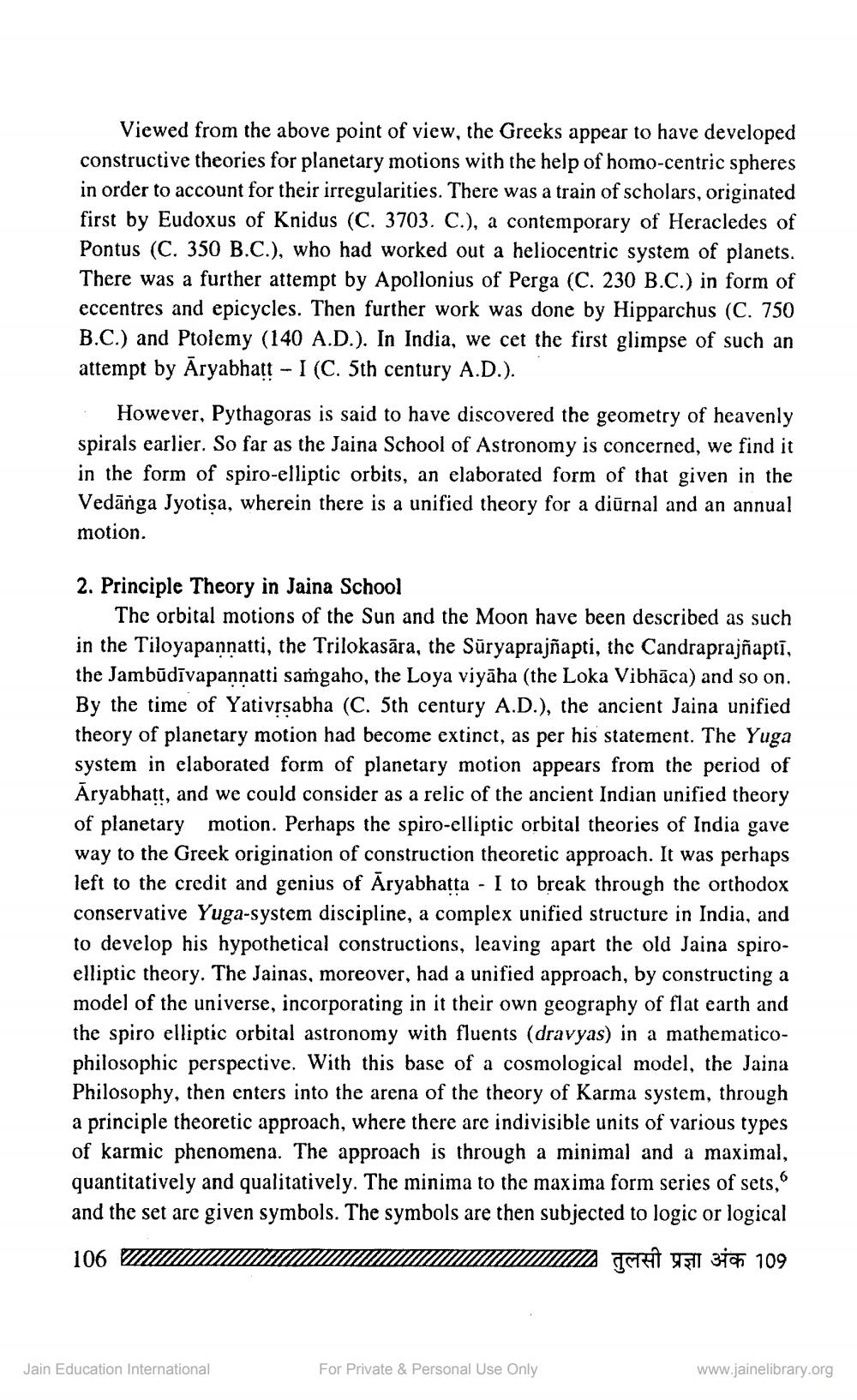________________
Viewed from the above point of view, the Greeks appear to have developed constructive theories for planetary motions with the help of homo-centric spheres in order to account for their irregularities. There was a train of scholars, originated first by Eudoxus of Knidus (C. 3703. C.), a contemporary of Heracledes of Pontus (C. 350 B.C.), who had worked out a heliocentric system of planets. There was a further attempt by Apollonius of Perga (C. 230 B.C.) in form of eccentres and epicycles. Then further work was done by Hipparchus (C. 750 B.C.) and Ptolemy (140 A.D.). In India, we cet the first glimpse of such an attempt by Aryabhatt - I(C. 5th century A.D.). : However, Pythagoras is said to have discovered the geometry of heavenly spirals earlier. So far as the Jaina School of Astronomy is concerned, we find it in the form of spiro-elliptic orbits, an elaborated form of that given in the Vedānga Jyotisa, wherein there is a unified theory for a diurnal and an annual motion.
2. Principle Theory in Jaina School
The orbital motions of the Sun and the Moon have been described as such in the Tiloyapannatti, the Trilokasāra, the Süryaprajñapti, the Candraprajñaptī, the Jambūdīvapannatti saṁgaho, the Loya viyāha (the Loka Vibhāca) and so on. By the time of Yativrsabha (C. 5th century A.D.), the ancient Jaina i theory of planetary motion had become extinct, as per his statement. The Yuga system in elaborated form of planetary motion appears from the period of Āryabhatt, and we could consider as a relic of the ancient Indian unified theory of planetary motion. Perhaps the spiro-elliptic orbital theories of India gave way to the Greek origination of construction theoretic approach. It was perhaps
eft to the credit and genius of Aryabhatta - I to break through the orthodox conservative Yuga-system discipline, a complex unified structure in India, and to develop his hypothetical constructions, leaving apart the old Jaina spiroelliptic theory. The Jainas, moreover, had a unified approach, by constructing a model of the universe, incorporating in it their own geography of flat earth and the spiro elliptic orbital astronomy with fluents (dravyas) in a mathematicophilosophic perspective. With this base of a cosmological model, the Jaina Philosophy, then enters into the arena of the theory of Karma system, through a principle theoretic approach, where there are indivisible units of various types of karmic phenomena. The approach is through a minimal and a maximal, quantitatively and qualitatively. The minima to the maxima form series of sets, and the set are given symbols. The symbols are then subjected to logic or logical 106 un
U N TATA 4511 3ich 109
Jain Education International
For Private & Personal Use Only
www.jainelibrary.org




